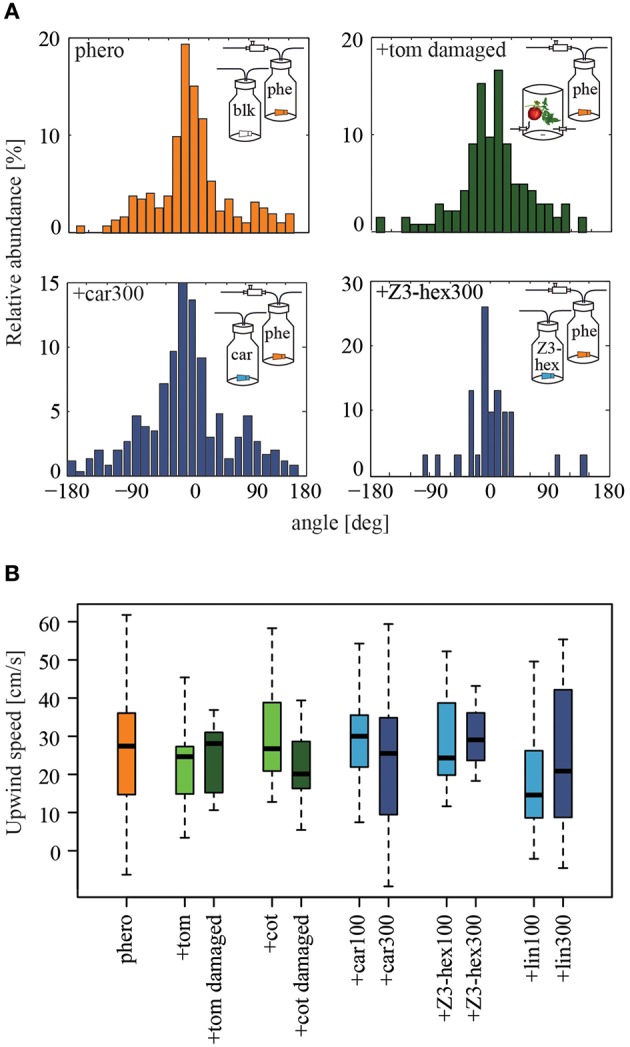Figure 3.

Influence of individual plant volatiles on pheromone-guided flight behavior. (A) Relative abundance of flight angles being performed by male moths within the upwind section of the wind tunnel close to the source, when pheromones alone (orange), a pheromone and the headspace of a damaged tomato plant (dark green), pheromone and β-caryophyllene or (Z)3-hexenol (dark blue, both with 300 μg), were used for stimulation. The distribution histograms cumulate all tracks of moths contacting the stimulus outlet. Flight angles are shown as cumulated azimuth and zenith angles. Most of the time insects facing upwind in the odor plume they perceived performed zigzagging and casting activities. (B) Males moths showed similar upwind speeds (p > 0.05, the Kruskal-Wallis test, Dunn's multiple comparisons test), when stimulated with the pheromone alone (orange, N = 41), or the pheromone in combination with 100 μg (Ncar= 12, NZ3−hex = 8, Nlin = 9) or 300 μg (Ncar = 13, NZ3−hex = 3, Nlin = 14) of artificial odorants (blue), or with the headspaces of cotton (Nintact = 8, Ndam = 13), or tomato plants (Nintact = 10, Ndam = 7) (green). blk, blank; car, β-caryophyllene; cot, cotton; lin, linalool; phe/phero, pheromone; tom, tomato; Z3-hex, (Z)3-hexenol.
